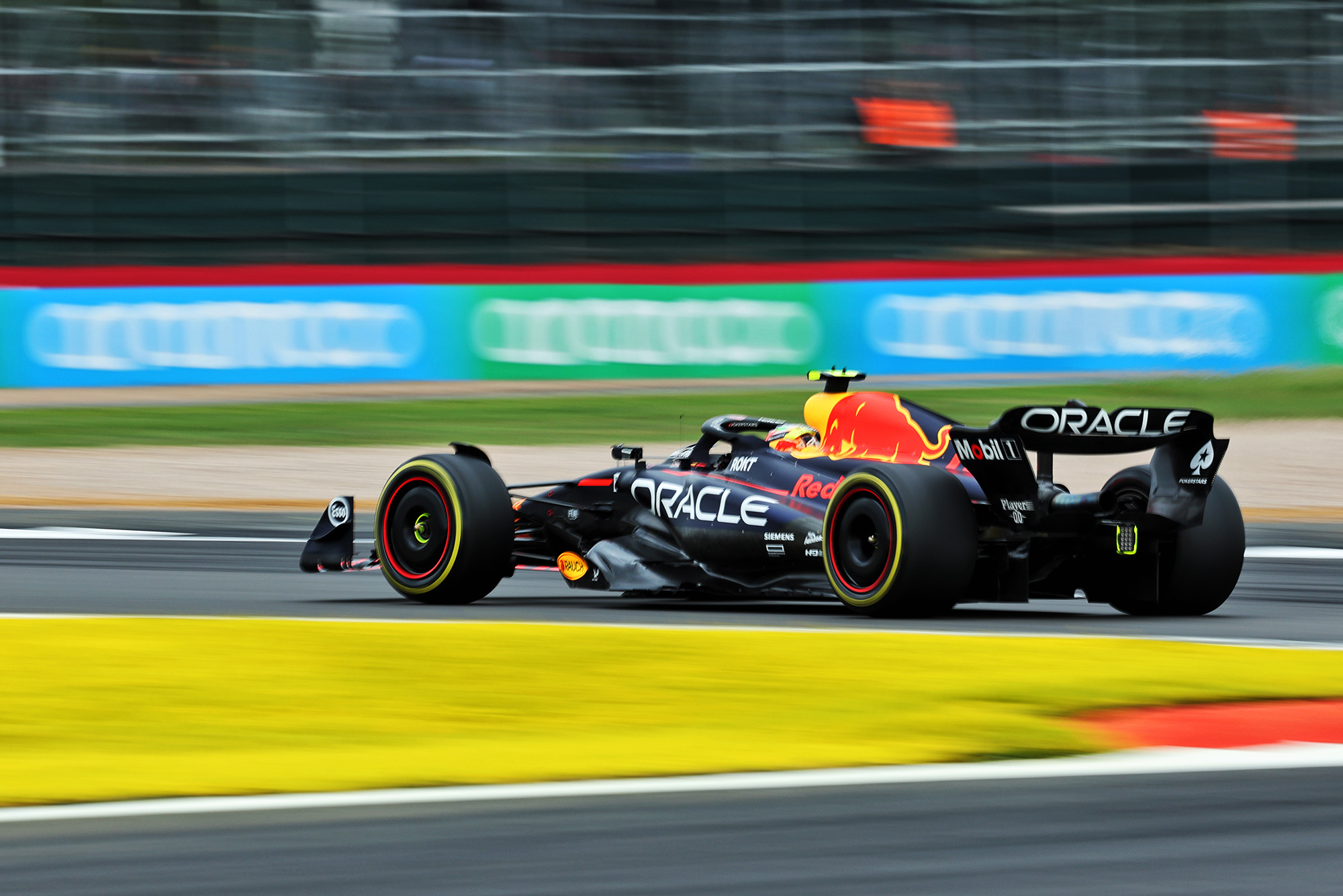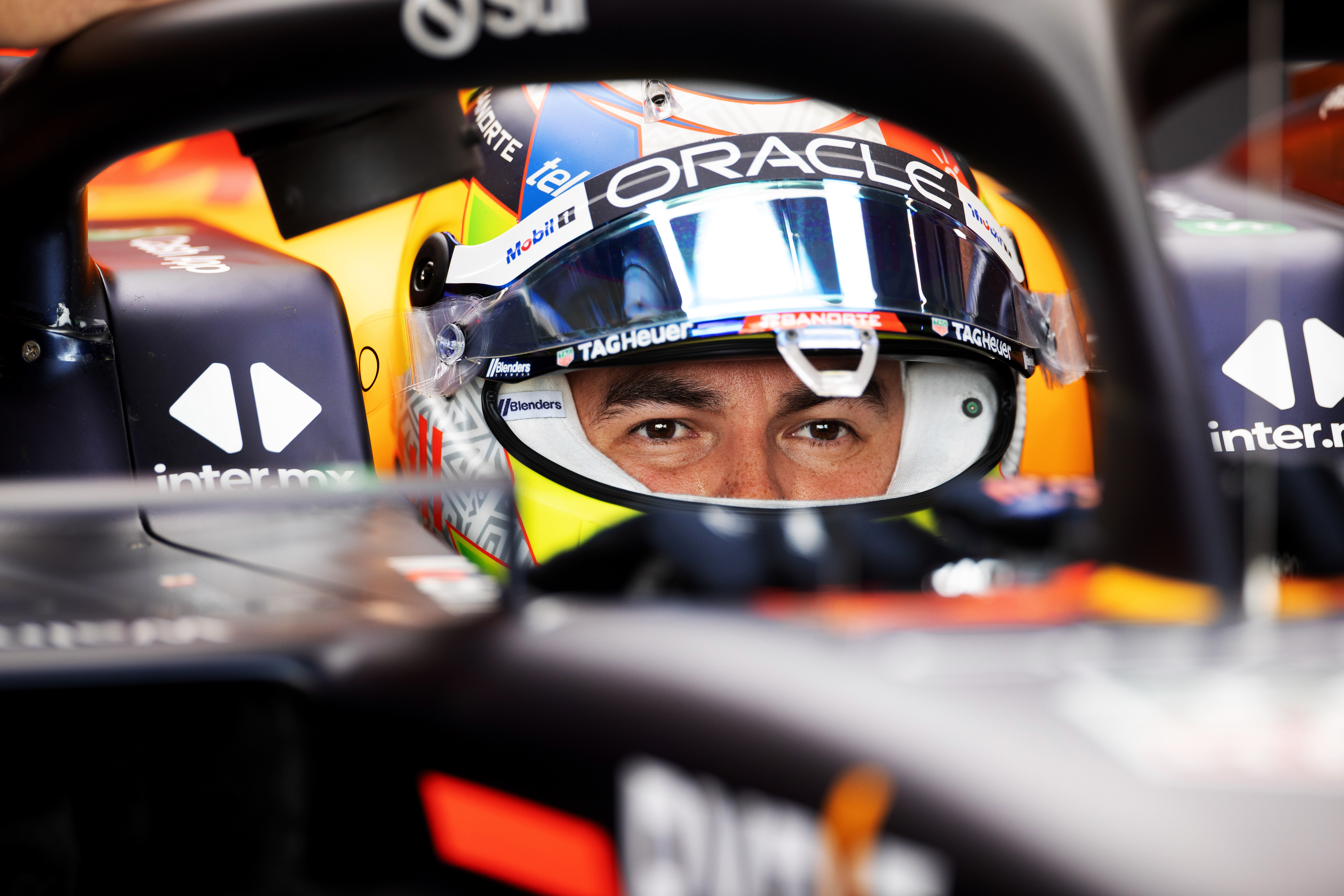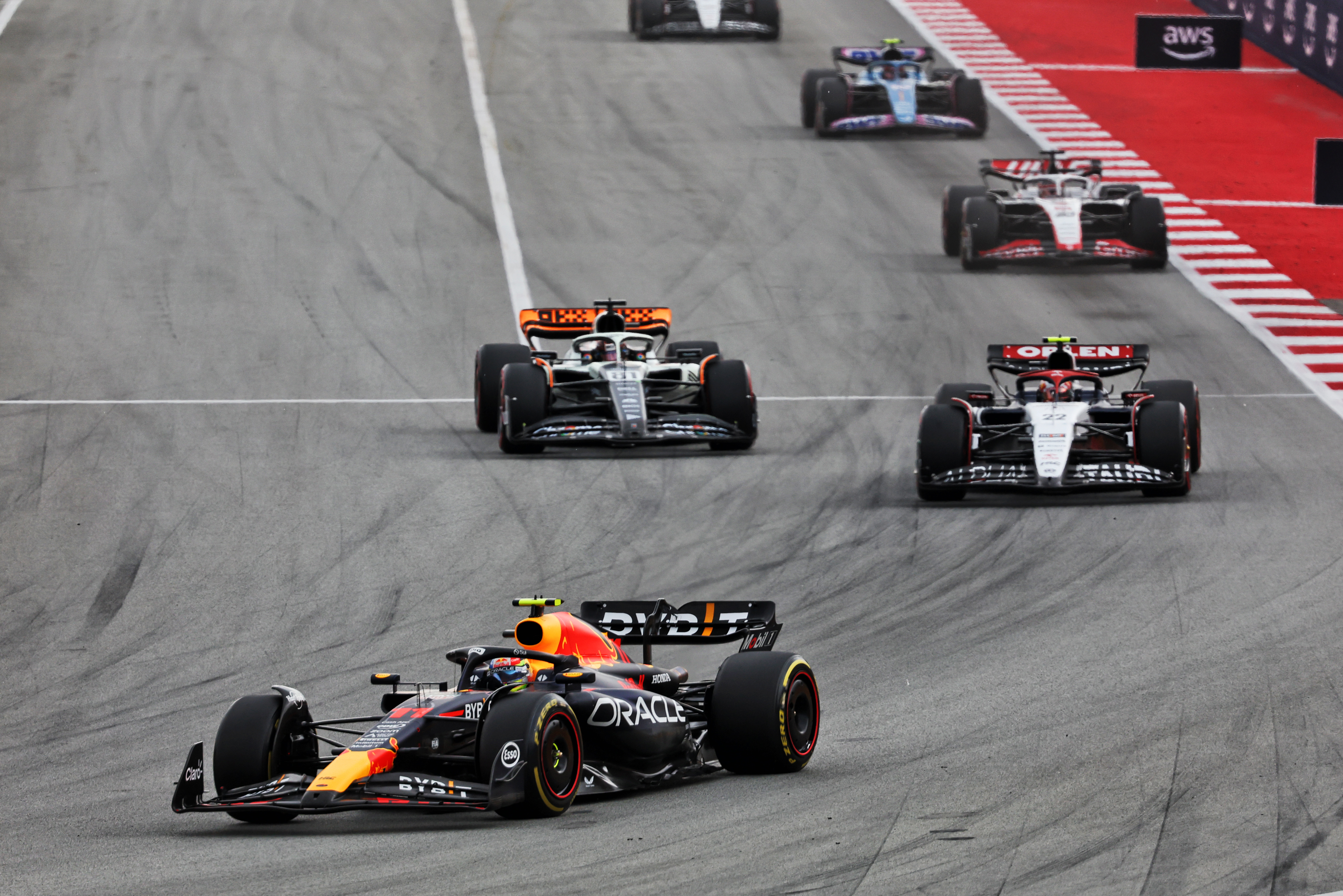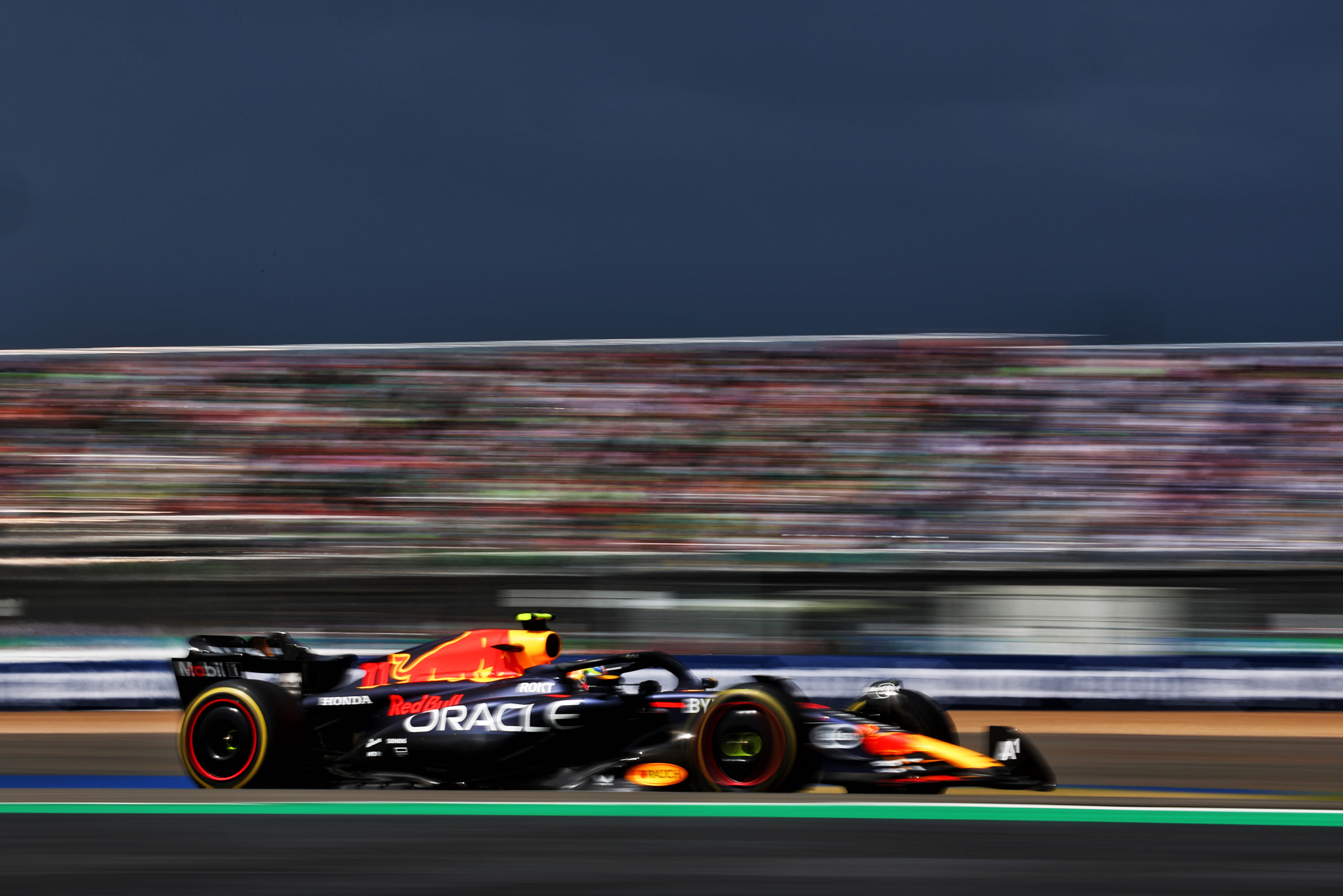Up Next

Sergio Perez told Formula 1’s media that he’d spend his Monday after the 2023 British Grand Prix in Red Bull’s simulator, trying to figure out a way to arrest what has become an alarming five-race qualifying slump.
Red Bull insists it is supporting Perez and doesn’t have plans to replace him yet (he’s contracted to the end of 2024 at least). Perez is perhaps fortunate the team faces no proper external competition this year – Verstappen would be winning the constructors’ championship solo such is his present level of dominance – and that Helmut Marko admits there is no one ready or readily available to take Perez’s seat away. That’s a situation that the imminent return of Red Bull reserve Daniel Ricciardo to a race seat with AlphaTauri may change, though.
After a fifth consecutive Q1 exit on Saturday at Silverstone, Perez suggested the changeable, lower grip conditions present for that session make “my issues with the car become more apparent”.
Having salvaged sixth from a 15th placed start in the race, Perez was inevitably asked further questions about his (lack of) Saturday form and replied: “I have become a little bit more sensitive to the car in the last few races, especially on Saturday on low fuel.”

Interestingly, Red Bull offered no clear explanation for this (either publicly or in private). But there is an emerging theme to what team principal Christian Horner is prepared to say on this matter.
In Spain and Canada last month, Horner spoke of pressure and how Perez was putting too much of it on himself in his quest to become a champion. He said Perez needed to relax his shoulders – the clear inference, given the substandard performances, being that Perez was struggling to follow this advice.
After Silverstone, Horner suggested the main underlying issue lay in Perez’s personal psychology.
“As in all sport, 90% of it is in the head,” Horner said.
Perez wouldn’t be the first driver to have somehow invented a feeling or vague explanation for why they suddenly cannot perform at the level expected. Equally, Red Bull might yet discover a hidden chassis problem that explains everything.
But the fact both Perez and his team boss are talking about a pattern underlying recent events, and Perez is undertaking simulator work to try to alter that pattern, suggests this is something specific to the way Perez is trying to drive RB19.

We know from one of Red Bull’s own press releases in Spain that Perez made a conscious attempt to adapt his driving style towards the direct, super-sensitive, on-the-nose, I-can-live-with-anything-the-
This made a certain degree of sense. Everyone knows it’s generally the fastest way. Of course not many, if any, drivers can do it quite like Verstappen can – that’s why he’s such a phenomenon – but Perez would have felt a genuine compulsion to at least try to beat Verstappen at his own game.
Coming into Monaco, the round before that driving style change was first mentioned, Perez trailed Verstappen by just 14 points in the world championship. Crashing out in Q1 there could be easily dismissed as a costly but silly mistake. No need to panic. The championship was still very much on in Checo’s head.
But next to Barcelona, a conventional F1 circuit made up mostly of medium-to-fast, long sweeping bends. Perez surely knew from the chastening experience of 2022 – a run of races between Baku in June and Singapore in September where he was generally miles off Verstappen’s pace – that this is where Verstappen would really begin making his talent count, after 2023’s early-season sequence of outlier tracks.
Getting that RB19 right back on its nose is the perfect way to avoid spending unnecessarily long periods waiting to get back on the throttle in many of those corners – if you can live with the rear instability that approach creates.

Trying to mimic this technique, or even better it, clearly put Perez out of his comfort zone. He’s long been a driver who thrives when the car is limited by front grip (understeer) because he has incredible feel for the slip angle of the rear tyres and how to modulate the throttle to avoid bursts of unnecessary wheelspin that overheat the sensitive Pirelli rubber as you bring the car out of the sudden but low-speed slides this understeer inevitably creates.
This is why he’s so strong on street circuits, because they generally demand more of the rear tyres than the fronts, and they generally require the cars to be set up with a degree of understeer built in – to help keep rear tyres that always tend to the softer end of the compound range in check temperature-wise. Pirelli altering its tyre construction for this season, to reduce the inherent understeer created by the old fronts, would naturally require further bias in this direction on street circuits, playing further to Perez’s natural style.
Get onto the conventional tracks, with a greater mix of cornering challenges, higher speeds, harder tyres, and inherent circuit grip limitations that tend to shift more towards the front (especially in cooler conditions) and suddenly the compromises are different. Drivers like Verstappen, who are incredibly adept at living with oversteer on corner entry, can use their braking technique (in conjunction with the car set-up) to avoid elongating the load put through that outside front tyre as they travel through these longer duration, high-loading corners.
This pays them back in a major way – especially in races, where the tyres almost inevitably need to be managed and lap time extracted with maximum efficiency. It’s a big part of the reason why Verstappen so easily overpowered Perez in Miami, where the front-left tyre was the main limitation.
So Perez would have been keenly aware coming to Barcelona – where the front-left was again the main limiting factor – that he needed to change something fundamental. Two wins from three races on street circuits, defeat in Bahrain, and a humbling reversal in Miami. The last of those would have played most on his mind given what was to come.
But Perez couldn’t undo 13 years of deeply ingrained habit in one weekend, and the result was comfortably his worst performance of the season to that point – Monaco silliness excepted. What’s followed, and indeed has likely been exacerbated in the sort of slippery conditions that always elongate the consequences of every mistaken driving input, is the inevitable loss of confidence that comes from misfiring attempts to do something you aren’t particularly comfortable with.
In the absence of any obvious developmental or set-up directional shift from Red Bull, this would explain why Horner thinks Perez’s current battle is mostly with himself.

Perez’s self-described ‘sensitivity’ could well be the exact opposite in fact – a distinct lack of feel. As Ricciardo explained last year when up against Lando Norris (like Verstappen, a generational talent), he often simply could not detect the same sensations when driving that Lando was articulating very clearly in McLaren’s briefings.
Heady on the sniff of a world title shot with a dominant car, Perez hasn’t wanted to simply adopt a subservient position to Verstappen. That would mean accepting his own limitations and moving his own car into a safer, easier, more compliant window of performance. Arguably, he’d be closer to Max than he is now if he did this – but he would also very definitely be second best on all but a handful of circuits. That’s no way to achieve your dreams.
But by (valiantly) trying to chase Verstappen and adapt himself to the quicker way to drive the car, Perez has come unstuck in a major way and now must chase ghosts in Red Bull’s simulator.
He may need to abandon this chase for the Golden Goose sooner rather than later – both for his future career prospects with Ricciardo now back on the grid and his own sanity. There’s no shame in this when you’re up against one of the all-time greats. Just ask Valtteri Bottas…







